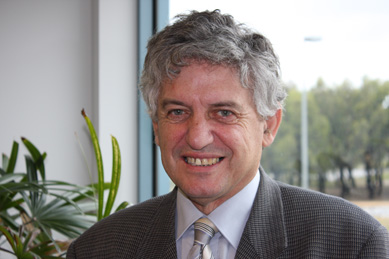 The Australian Synchrotron Open Day on 15 August 2010 is an important occasion for us and a great opportunity to showcase our facility to several thousand members of the public. Our open days enable us to share our enthusiasm for synchrotron science and demonstrate the benefits that research undertaken at the Australian Synchrotron offers the community. This year, Open Day will also kick off National Science Week, celebrating the importance of the Australian Synchrotron in the local science, development and innovation landscape.
The Australian Synchrotron Open Day on 15 August 2010 is an important occasion for us and a great opportunity to showcase our facility to several thousand members of the public. Our open days enable us to share our enthusiasm for synchrotron science and demonstrate the benefits that research undertaken at the Australian Synchrotron offers the community. This year, Open Day will also kick off National Science Week, celebrating the importance of the Australian Synchrotron in the local science, development and innovation landscape.
Another way we’re working to increase support for the Australian Synchrotron is through consultation with government stakeholders and foundation investors. Following an extensive consultative process, the Australian Synchrotron recently completed and submitted its strategic growth and expansion plans to the Victorian and federal governments. The documentation, which comprises a comprehensive Investment case and a detailed ‘science case’, was also provided to the New Zealand Synchrotron Group. We look forward to further discussions and negotiations with our major stakeholders.
The Science Case includes an exciting plan for expansion of the Australian Synchrotron by adding 10 new beamlines to our existing suite. A team of national and international experts has rigorously reviewed the final document, which we feel represents a robust and rational plan for the future of our Facility.
In July 2010, the Hon. Kim Carr, Minister for Innovation, Industry, Science and Research, launched the Australian Collaboration for Accelerator Science (ACAS). ACAS unites the Australian Synchrotron, the University of Melbourne, The Australian National University (ANU) and the Australian Nuclear Science Technology Organisation (ANSTO) in a collaboration that will help us to maintain state-of-the-art accelerator-based facilities in Australia and train a new generation of young Australians to continue our contribution to this critical area of research.
Also in July, we hosted the second Australian Synchrotron Winter School. We received positive feedback from everyone involved, with all participants ranking the school as either ‘excellent’ or ‘very good’. The Winter School was an excellent opportunity to work closely with the Australian and New Zealand Association for the Advancement of Science (ANZAAS) to encourage early career researchers to further develop their careers. ANZAAS presented the three most outstanding Winter School applicants with awards in recognition of their achievements. I would like to offer my congratulations to the recipients: Yuan Mei (University of Adelaide), Matthew Dunstan (University of Sydney) and Kasimu Yiliyasi (University of Sydney). We are already planning our 2011 Winter School and I ask you to encourage any young scientists you work with to consider applying for this school to help advance their scientific career.
For many of you, our most important news is the announcement of our 2010 User Meeting, which will take place on 22-24 November. We are looking forward to welcoming users and synchrotron scientists from around the world. This meeting will enable current and potential users to hear from local and international synchrotron experts and swap ideas about how to make effective use of the experimental facilities here at the Australian Synchrotron. We have already had strong interest in this event and I encourage you and your colleagues to register early to avoid disappointment as places will be limited.
And finally, at the Australian Synchrotron we are always interested in your feedback. If you have a few minutes, please consider completing our short online survey about Lightspeed. Your input is crucial to ensure we continue to make effective use of this channel to provide you with timely and relevant information and help us improve and refine this publication to better meet your needs.
Image: George Borg, Acting Director, Australian Synchrotron
